Anticipez sereinement la réglementation carbone avec un bilan conforme et actionnable
- BEGES obligatoire pour toutes les entreprises de plus de 500 salariés et les collectivités de plus de 50 000 habitants.
- Votre bilan GES complet et conforme (Scopes 1, 2 et 3). Solution adaptée à la taille de votre entreprise avec accompagnement personnalisé
- Grâce à notre plateforme collaborative, engagez vos fournisseurs et vos collaborateurs dans votre stratégie de décarbonation.
- Normes internationales et méthodologie certifiée. GHG Protocol - ISO 14064-1 - Méthode Bilan GES réglementaire
- Accès aux bases de données de référence. Base Carbone® - EcoInvent® - IMPACTS® - Empreinte® - Inies® - BEIS-DEFRA®
- Transformez votre BEGES en avantage concurrentiel. Nous vous accompagnons au-delà du reporting réglementaire pour créer de la valeur : Plan de transition - Attractivité commerciale - Performance durable
Réservez votre diagnostic gratuit avant l’échéance réglementaire
Rejoignez les 500+ entreprises déjà accompagnées
✓ Sans engagement ✓ Confidentialité garantie ✓ Expert dédié
Des entreprises déjà engagées à nos côtés pour atteindre ensemble l’objectif mondial de neutralité carbone.

Réalisez votre bilan GES complet et conforme aux normes et réglementations en vigueur

Soyez accompagné par nos experts carbone GCI

Définissez vos actions de réduction, planifiez votre stratégie bas-carbone

Engagez gratuitement vos fournisseurs pour optimiser le calcul de vos émissions Scope 3

Un bilan GES approuvé et conforme
Protocoles pris en charge :






Votre Bilan GES, sans stress et avec impact
Pas besoin d’être expert pour démarrer.
- Un parcours simple et adapté à votre activité, quelle que soit sa complexité.
- Les scopes 1, 2 et 3 ? Pris en charge automatiquement, sans prise de tête.
- Des données fiables issues des meilleures bases : Base Carbone®, EcoInvent, Inies, BEIS… ou directement transmises par vos fournisseurs.
- Un Bilan 100 % conforme aux standards les plus exigeants : ISO 14064, ISO 14067, GHG Protocol.
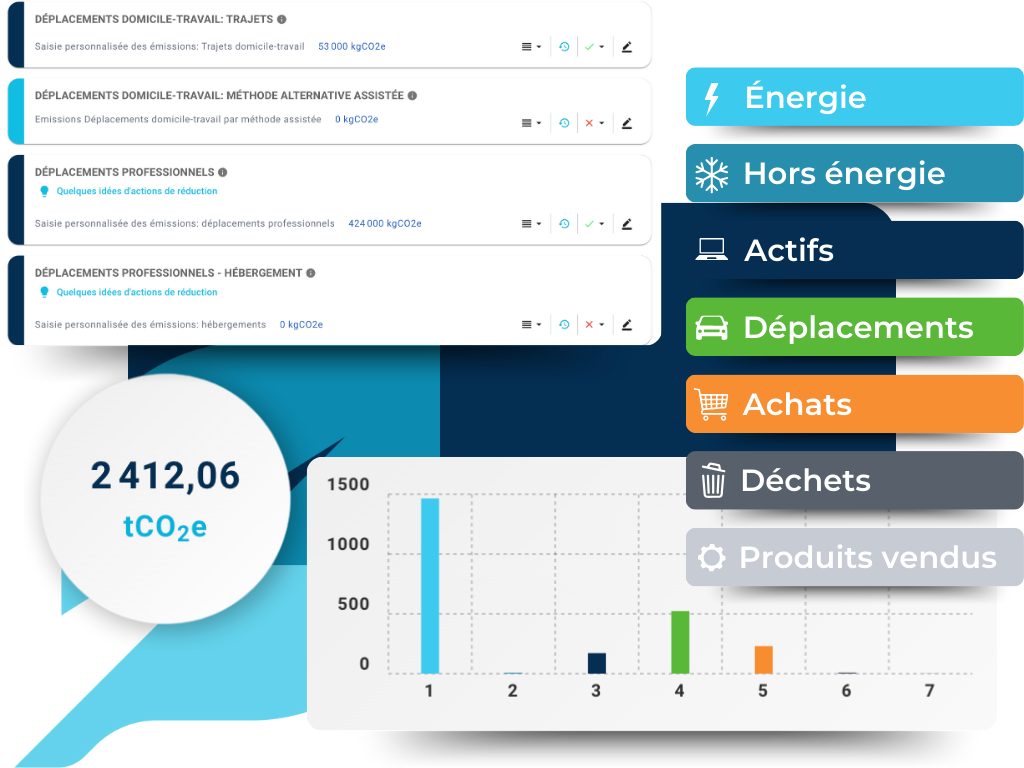
Un plan de transition structurée, pilotée et visualisée
Que vous ayez déjà réalisé votre bilan GES avec nous ou non
- Conception et pilotage de plans d’actions complets (Méthode Act de l'ADEME).
- Quantification et projection de l'impact GES grâce aux outils de simulation.
- Définition de la trajectoire bas carbone avec l'engagement des partenaires.
- Comparaison de la trajectoire réelle avec les objectifs de réduction (SBTi).

Enrôlez vos fournisseurs dans votre démarche climat
Une plateforme simple et gratuite pour décarboner ensemble.
- Intégrez automatiquement les données carbone de vos fournisseurs dans votre scope 3.
- Suivez et visualisez la trajectoire bas-carbone de vos achats en temps réel.
- Assurez la conformité réglementaire (CSRD, SBTi et CBAM) en vous appuyant sur des données fournisseurs fiables et auditables.
- Offrez à vos fournisseurs un accès à l’évaluation GES et ACV de leurs produits et services.
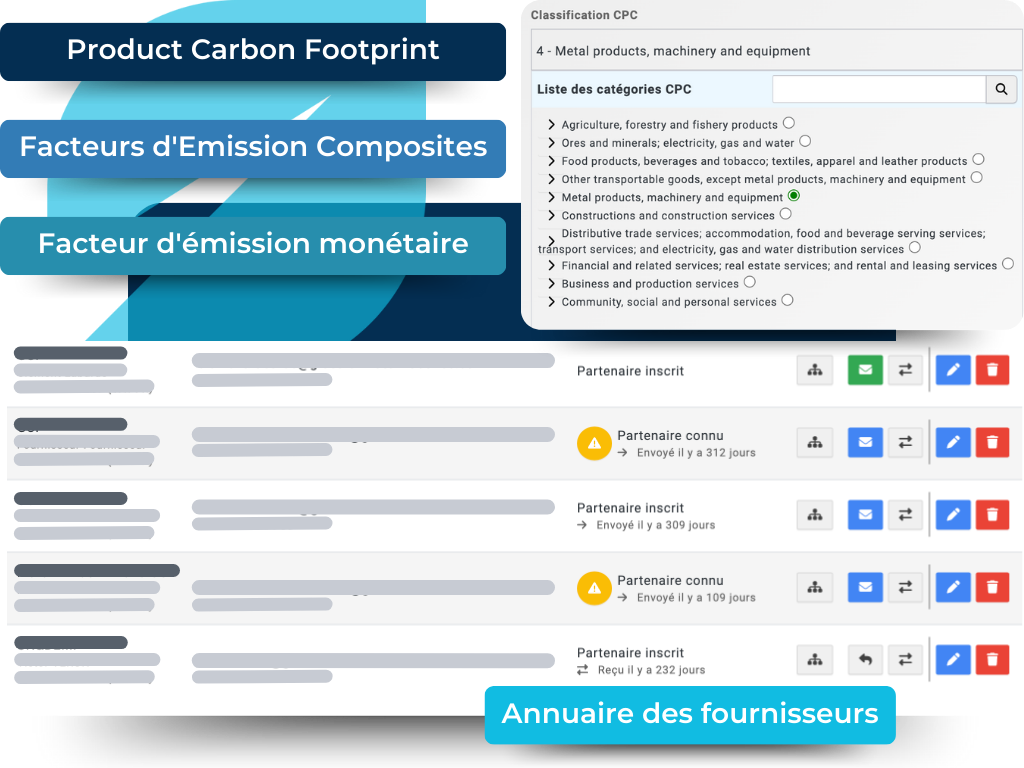
Exigez la performance climat dès les appels d’offres
Une plateforme simple et gratuite pour décarboner ensemble.
- Demande précise de PCF ou FEMPP® dans les appels d'offres.
- Lien vers la plateforme GCI pour un calcul par bien ou service demandé (avec notice descriptive).
- Conformité au code des marchés publics: gratuit et ciblée sur une caractéristique environnementale.
- Conformité au standard ISO 14 067.
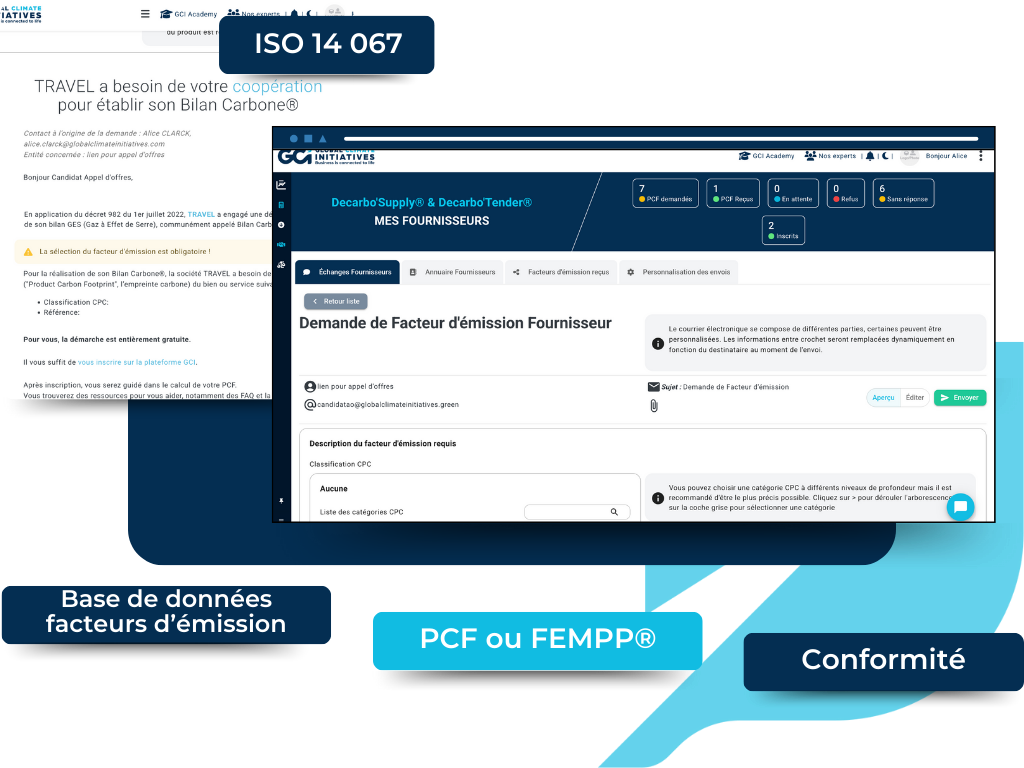
Ils se sont engagés
et partagent leur expérience
La FFBad confie à GCI l’évaluation carbone de ses activités, et se poursuit avec la réalisation du bilan GES de 20 clubs affiliés.
Le Groupe Schmidt a pu enrôler 80% de ses fournisseurs (en termes de volume financier), et réaliser une économie de 242 tonnes de CO2.
Natural Grass a été accompagné par les experts carbone de GCI pour la réalisation de son premier bilan des émissions de GES.
Nous répondons à vos questions !
Comment calculer le bilan GES de mon entreprise ?
Tout d’abord, réaliser son bilan de gaz à effet de serre (BEGES) permet à l’entreprise d’évaluer précisément son empreinte carbone et de comprendre la source principale de chacune de ses émissions de gaz à effet de serre.
La différence principale entre le Bilan Carbone® et le Bilan GES réside dans la définition du périmètre de comptabilisation des émissions.
Dans la méthodologie de l’Ademe, le calcul du Bilan Carbone® prend en compte l’ensemble du cycle de vie des produits ou services de l’activité d’une entreprise. Ceci permet d’évaluer de façon globale les émissions de GES de l’activité et d’identifier toute source d’économie.
Les émissions de gaz à effet de serre (GES) sont évaluées en fonction de la consommation, en utilisant des facteurs de conversion spécifiques à chaque source d’énergie. Cela permet de standardiser les mesures et d’obtenir une quantité d’émissions exprimée en équivalent dioxyde de carbone (CO2e).
Autrement dit, il s’agit d’une simple multiplication de sa donnée d’activité (en kWh, unité, litres, €) par un facteur d’émission (quantité moyenne d’émission de gaz à effet de serre pour 1 unité de sa donnée d’activité).
Pour calculer son bilan de GES, il faut donc faire la collecte de ses données d’activité qui émettent directement et indirectement des gaz à effet de serre et les convertir grâce à un facteur d’émission.
Pourquoi réaliser le bilan GES de mon entreprise ?
Au-delà des obligations réglementaires (notamment depuis le decret n°2022-982), la réalisation d’un bilan carbone est une étape essentielle pour une entreprise car elle permet d’identifier et de lister les postes d’émissions de gaz à effet de serre directement ou indirectement liés à son activité.
La réalisation de son premier bilan GES permettra alors une première mesure et de détecter les postes principaux d’émission. Il n’en sera que plus facile de détecter les pistes de réduction possibles et de définir une stratégie bas carbone pour son entreprise.
La réalisation régulière dans le temps de bilans GES sera l’occasion d’ajuster son plan d’action et de s’assurer de l’atteinte de ses objectifs de diminution de l’impact environnemental de son entreprise.
Quelles sont les données que je dois fournir ?
Pour une mesure précise de ses émissions de gaz à effet de serre, il faut identifier l’ensemble des postes d’émissions de son entreprise. Il est donc nécessaire de collecter ses données d’activité:
- Consommations d’énergie (gaz, fioul, diesel, essence, électricité, etc…..)
- Actifs en amortissement (immobilier, flotte de véhicules, parc informatique, mobilier, etc…)
- Achats de biens (matières premières, matériaux, produits alimentaires, etc…)
- Achats de services (abonnement internet, maintenance et installation des équipements, fournitures de prestations, honoraires, etc….)
- Déplacements de personnes: déplacements domicile travail des salariés, déplacements professionnels, visiteurs et clients, etc…..
- Transport de marchandises
- Mise en déchet
- Utilisation et fin de vie de ses produits vendus.
Bien qu’il soit recommandé d’être le plus exhaustif possible à terme dans l’identification des postes d’émissions, il est possible de commencer avec des données financières et d’affiner dans le temps la précision des données. Nous vous recommandons de faire votre bilan par étape, et de commencer par vos dépenses les plus importantes au départ.
Comment diminuer l’empreinte carbone de mon entreprise ?
Diminuer l’empreinte carbone de son entreprise se fait en plusieurs étapes :
- Faire une première mesure de son empreinte carbone
- Identifier les postes d’émissions les plus importants et trouver des pistes de réduction en améliorant la précision des données utilisées pour la mesure
- Impliquer vos fournisseurs en leur demandant de calculer l’empreinte carbone des biens et services fournis. La mesure n’en sera que plus précise et vous pourrez alors mettre en place une stratégie d’achats responsables
- Mettre en place un plan d’action et une stratégie de mesure dans le temps permettant de s’assurer de sa bonne réalisation et de son efficacité.
Nous sommes membre :
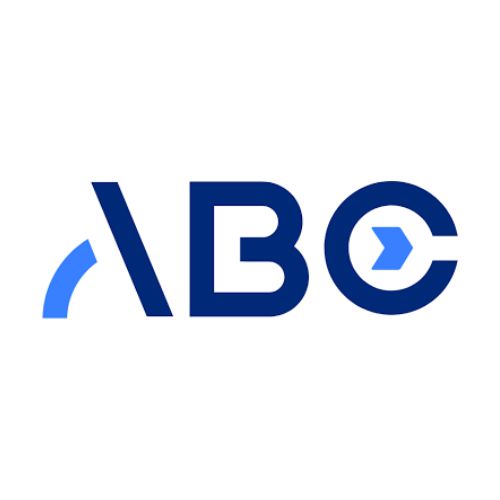
Association pour la transition bas carbone

Association des Professionnels en Conseil Climat

Conseil National des Achats
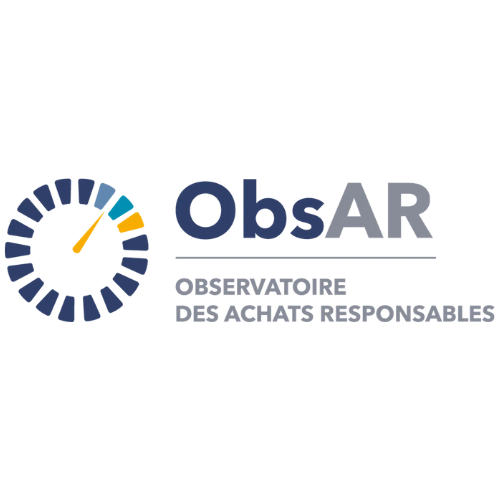
Observatoire des Achats Responsables
Demander une démo
Demandez votre démonstration de la plateforme GCI,
nos experts sont à votre écoute.






















